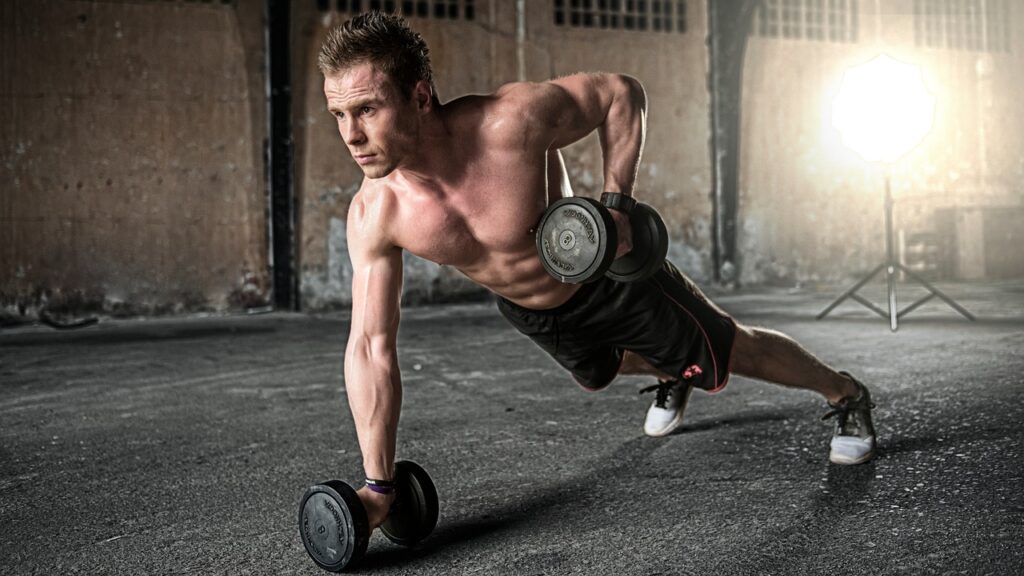High-Intensity Interval Training (HIIT): A Beginner’s Guide
Short on time but big on fitness goals? High-Intensity Interval Training (HIIT) might be the perfect solution for you! HIIT has taken the fitness world by storm, and for good reason. It’s a time-efficient, effective way to burn serious calories, boost your metabolism, and improve overall fitness in a shorter amount of time compared to traditional workouts.
What is HIIT?
HIIT is a training style that alternates between short bursts of intense exercise with periods of rest or low-intensity activity. This creates an “afterburn” effect, where your body continues to burn calories even after your workout is done. Studies have shown that HIIT can be just as effective, if not more so, for improving cardiovascular health and burning fat compared to longer, steady-state cardio workouts.
HIIT for Beginners: You Got This!
New to HIIT and worried it might be too intense? Don’t sweat it! The beauty of HIIT is its scalability. You can modify workouts to fit your current fitness level. Here are some tips to get you started safely and effectively:
- Start Slow and Progress Gradually: Don’t jump into high-intensity workouts right away. Begin with shorter intervals and lower intensity levels, gradually increasing the duration and intensity as your fitness improves.
- Focus on Form: Proper form is crucial to avoid injuries. Master the technique of each exercise before pushing yourself too hard with intensity.
- Listen to Your Body: This is your workout, not a competition. Take rest periods when needed, and don’t hesitate to modify exercises to suit your capabilities.
Sample Beginner HIIT Workout:
Ready to give HIIT a try? Here’s a simple, beginner-friendly workout you can do at home with minimal equipment:
Warm-up (5 minutes): Light cardio like jumping jacks, jogging in place, or arm circles to get your blood flowing and muscles warm.
The Workout:
- High Knees: Run in place for 30 seconds, bringing your knees up high with each step.
- Rest: 30 seconds of walking or light jogging on the spot.
- Squats: Perform 15 bodyweight squats, focusing on keeping your core engaged and back straight.
- Rest: 30 seconds of walking or light jogging on the spot.
- Jumping Jacks: Do 30 seconds of jumping jacks, aiming for explosive movements.
- Rest: 30 seconds of walking or light jogging on the spot.
- Push-Ups: Modify push-ups on your knees if needed. Aim for 10 repetitions with proper form.
- Rest: 30 seconds of walking or light jogging on the spot.
Cool-Down (5 minutes): Gentle stretches for major muscle groups involved in the workout (legs, core, arms, shoulders).
Repeat this circuit 2-3 times, taking a rest of 1-2 minutes between each round. As you get more comfortable, you can gradually increase the duration of the high-intensity intervals or decrease the rest periods.
Variations and Progressions:
Once you feel comfortable with this beginner routine, you can explore different HIIT variations:
- Bodyweight HIIT: This workout utilizes bodyweight exercises like squats, lunges, push-ups, and burpees.
- Bodyweight + Cardio HIIT: Combine bodyweight exercises with short bursts of cardio activities like jumping jacks, jumping rope, or high knees.
- Bodyweight + Light Weights HIIT: Incorporate light dumbbells or resistance bands for added intensity to exercises like bicep curls, overhead presses, and rows.
As your fitness improves, you can progress your HIIT workouts by:
- Increasing Intensity: Perform exercises at a faster pace or with more weight.
- Increasing Duration: Extend the duration of the high-intensity intervals.
- Decreasing Rest Periods: Shorten your rest periods between intervals.
Conclusion:
HIIT is a fantastic way to boost your fitness level, burn calories efficiently, and save time. Remember, consistency is key! Start slow, prioritize proper form, and gradually increase difficulty as you progress. With dedication, you’ll be reaping the benefits of HIIT workouts in no time.
Share your thoughts with us:
Have you tried HIIT workouts? Share your experiences or ask questions about modifications in the comments below! Let’s motivate and support each other on our fitness journeys.
HIIT Myths and Facts:
- Myth: You need to be in top physical condition to do HIIT.
- Fact: HIIT can be modified for all fitness levels.
- Myth: HIIT workouts are high-risk for injuries
- Fact: With proper form and listening to your body, the risk of injury is low.
- Myth: HIIT requires expensive gym equipment.
- Fact: Many effective HIIT workouts can be done at home with bodyweight exercises or minimal equipment like dumbbells or resistance bands.
So, ditch the excuses and give HIIT a try! You might be surprised at how much you enjoy the challenge and the results you achieve.

